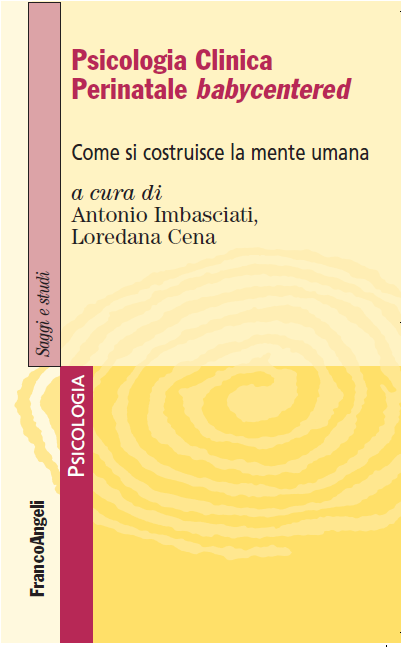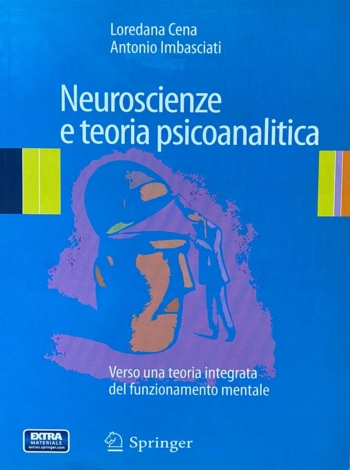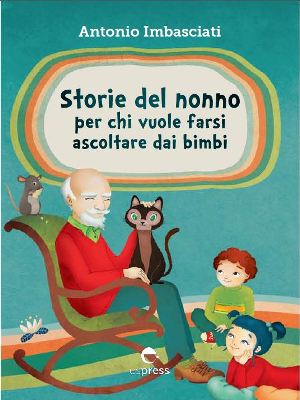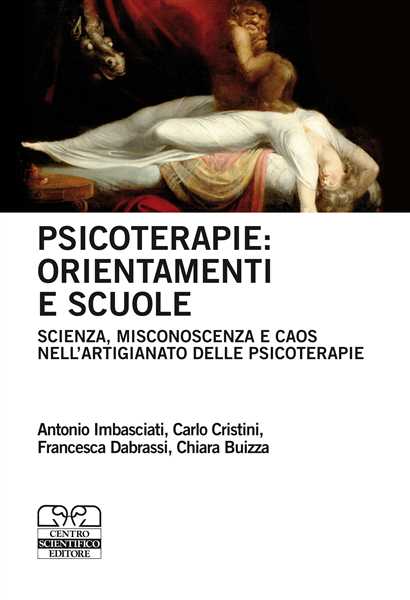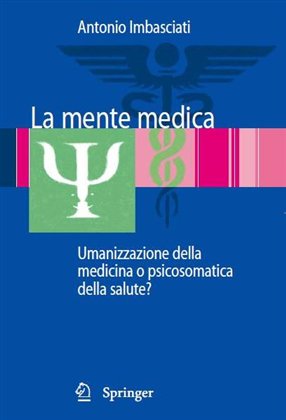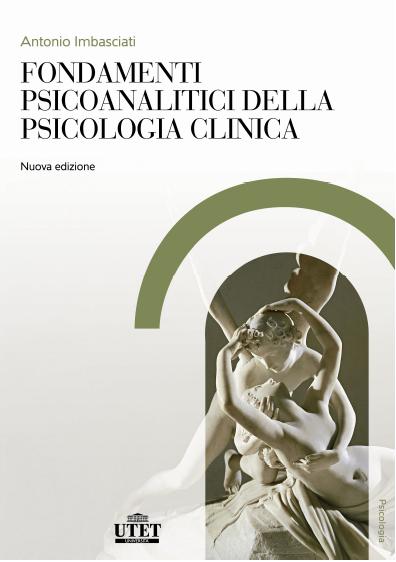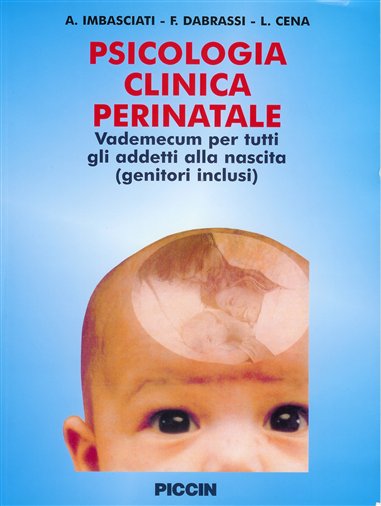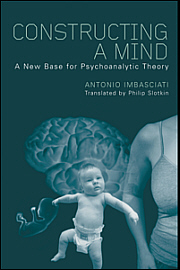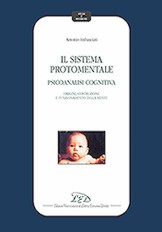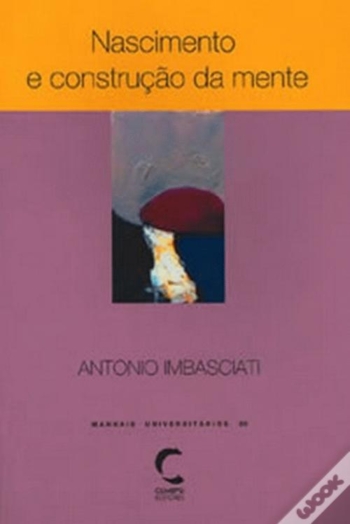Printed books
[Of the area of competence 1. Psychoanalysis, Psychotherapy and Clinical Psychology]For a long time in medical area “Perinatal Clinical Psychology” had the meaning of a psychological clinics in pregnant women and her puerperal period. What might happen in her baby was observed only for its clear organic pathologies: its interior vicissitudes were not known, as all scientists of the time thought it has no mental life. But nowadays Neuroscience has proven the heavy importance of its brain construction in its first neural net; and its first functioning in mental events without any consciousness.
These first neuromental structures condition the ones that are later constructed …
In this last book (www.imbasciati.it) I have collected and tried to summarize the ideas I have developed by integrating different sciences of the mind during my long experience as a psychoanalyst, a researcher, then a professor, a trainer as well as a director of a university school. Throughout my professional life I aimed at systematizing, integrating and possibly unifying the diverse theories on the origins and functioning of the mind. In psychoanalysis these theories – although they were formulated over a century ago – are still mixed and confused in a state of inadequacy both in terms of epistemology and general culture. In my life, psychoanalysis has been the field where I have, most passionately, found implicit scientific limits in the institutions which have as their explicit goal the development of the science that Freud founded one-hundred years ago. But this is the case everywhere: Institution, as Elliott Jacques said, works against Organization. (…)
Today psychoanalytic clinical practice is not that Freud’s. Infant and infant-with-mother/parents psychoanalysis opened up large perspectives that have deeply affected the whole psychoanaltic theory and practice. Psychoanalytic clinical practice changed and progressed greatly. But in its theoretical frame today psychoanalysis has a number of concepts and theories, so that a confusion and different laguages have developed. This is due to an obstinate almost religious preservation of old concepts along new ones. In particular energy-drive concepts of Freud’s Metapsychology contradict the progress of current psychoanalysis, and yet they are used. (…)
The Author invented and experienced five stories wich may give an educational and emotional support for parents and children relationship. Five animals are the protagonists of tales to talk about jealousy, sibling rivalry, envy, greed, sex, babybirth, love and so on. These stories have not to be read: They must be told by sensible caring adult person, if we wish they have its proper effects. (…)
Today an increasing number of people feel psychic discomfort, generally labelled as stress, and they therefore say: “I may need psychotherapy.” But there is much hesitation between such a statement and its realization. Many other people don’t even feel the need for it, crushed by the fast pace of contemporary society, while, as a result of the social situation, they would actually have a great need for it. The first hesitation is due to ignorance, or rather to the misconception of what is meant by “psychotherapy”. (…)
Progress in medicine has made the physician’s practice more technical and has inevitably reduced the mental and operational spaces that he used to devote to the human relationship, which in the past he was able to establish with his patients. In this regard, the physician did effectively embody the Latin saying medicus ipse farmacum. Also the current medical training, with an ever increasing necessity for biological and technical knowledge and the continuous updating required in these fields, decreases the possibility for the doctor as a person to take care of the patient as a person. What Balint described in his book Doctor, patient, and illness in 1957 is a myth by now. Inevitably the organisation of hospitals and other health facilities has also become burocratic, erasing all possibility of being “humane”. (…)
Great misunderstanding exists when trying to comprehend what is meant by Clinical Psychology and its connections with Psychoanalysis. Just as vast is the misunderstanding of psychoanalysis itself: people talk about drive, Oedipus, libido, super ego and repression as if these were Freud’s “discoveries”. In fact, they are not discoveries at all, but concepts by which Freud tried to construct a theory –his metapsychology– using the means available at the time to explain what his ingenious method of exploration had found out and described in the clinical field. There is great confusion about what is meant by “discovery”, or rather by “theory” or “method”, just as there is confusion about the description of a phenomena and its explanation. Discoveries remain, theories change and methods develop. (…)
Birth is the most important event in family life. Since pregnancy, worries, anxieties, joy, responsibilities take over every-day life. Midwives and pediatricians give advice, rules, prescriptions, to mothers who are in fact looking for being reassured that everything will be fine. “Is your pregnancy somewhat unusual? Doesn’t your baby move the way he is expected to? Will he be healthy?” After birth, many problems often occur: the baby won’t attach itself to th breast, the milk dries up, the baby does not eat enough or eats too much, he doesn’t sleep at the proper times. (…)
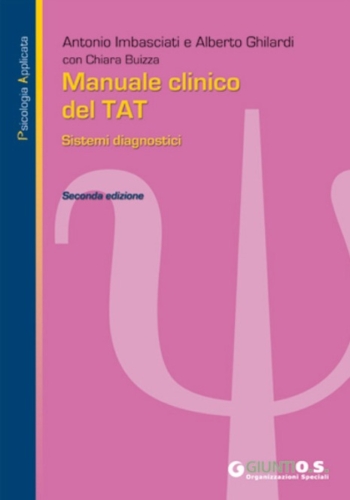
Psychoanalysis could be successful not merely for its clinical value – to cure unexplained syndromes that were considered incurable– or for its method, judged very ‘strange’ and not scientific, but also for the theory that Freud created to explain the origins and the functioning of the mind: the Drive Theory. (…)
Psychoanalysis could be successful not merely for its clinical value – to cure unexplained syndromes that were considered incurable– or for its method, judged very ‘strange’ and not scientific, but also for the theory that Freud created to explain the origins and the functioning of the mind: the Drive Theory. (…)
The Freudian theory was successful because it seemed to offer an explanation of the psyche from hypotheses in line with the sciences of his time: the concepts of libido, drive, psychic energy, discharge, instinct, economic principle tracked the contemporary scientific principles and discoveries of neurophysiology and thermodynamics. In such a context, for a long time and up to present day, the popular stereotypes in psychoanalysis are identified with Freud’s theory. This theory nevertheless has been widely criticized, also within psychoanalytical Associations, and for several decades now. In spite of this, the Freudian theory seems “to withstand”. A reason for such a persistence, in the author’s view, can be identified in the fact that different psychoanalytic models have been proposed at different times, without however clearly delineating an alternative explication of what Freud wanted to explain. His Drive Theory did have an explanatory value in this time. Today it may maintain its heuristic value, which may still be useful to understand affects and therefore helpful in clinical practice, but it no longer has an “explanatory” value. To Freud this latter was perhaps more important than the former, but nowadays it is untenable.

